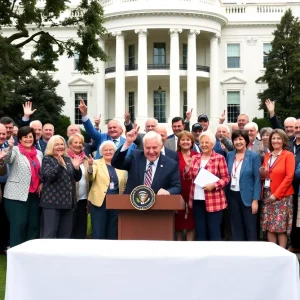The “Cost-Plus Model”: A Pharmacy in Kansas City Area Revolutionizes Prescription Economics
Prescription drug prices are a worry to almost everyone these days. But in Kansas City, there is hope. One pharmacy has adopted a fresh model for filling prescriptions that is reported to save patients a great deal of money on their medication costs. The “cost-plus model”, so named by the pharmacy’s users, can reportedly reduce the expense of a patient’s medications and save them thousands of dollars annually.
The High Cost of Prescription Drugs
According to information from Kaiser Family Foundation (KFF), the cost of prescription drugs in the United States is two to four times higher than that in many other countries. The burden of these exorbitant drug prices fall squarely on patients, forcing them to bear the brunt of the high costs.
A Life-Changing Experience
John Hudson, a Kansas City area resident who requires ten different medications per day, is one such customer who shared his experience with the cost-plus model. “I’m saving a lot of money – $2,500 to $3,000 a year, just on two medicines,” said Hudson, detailing the incredible difference in cost between traditional pharmaceutical pricing and the cost-plus approach.
The Brain behind the Model: Nicholas Romo
Nicholas Romo, the pharmacist-in-charge at Pharmington Drugs in Overland Park where the unique approach was implemented, deeply resonates with the struggle of patients to afford their medications. “No one should ever have to go without medication because they can’t afford it,” he opined.
Romo developed the cost-plus model to charge customers based on what he pays to acquire their medicine, with an added 20% markup. This applies to all generic drugs. Although this method doesn’t involve insurance and requires customers to pay out of pocket, the cost usually amounts to less than the copay at larger drugstores.
Lack of Transparency in Prescription Costs
Sarah Oprinovich, Clinical Associate Professor at the Department of Pharmacy Practice and Administration, expressed her opinion that prescription costs need more transparency. She further added, “It works really well for generic medications, brand name medications not so much.”
Despite the overwhelming cost discrepancies, Pharmington Drugs is not a large chain with the leverage to influence market prices. It’s a small business trying to strike a reasonable balance between profits and affordability for their customers. Romo reinforces his point saying, “Medications are actually super cheap. We just don’t know that because we’re not told that.”
Facing the High Costs
In view of otherwise painful prices, patients such as Hudson have found relief at Pharmington Drugs. This pricing model may not only revolutionize the approach of small pharmacies, but also prove to be a lifeline for patients grappling with the high cost of prescription drugs. The success story of Pharmington Drugs suggests a promising technique for other community pharmacies to consider and potentially implement as they navigate the challenges of today’s pharmaceutical market.







